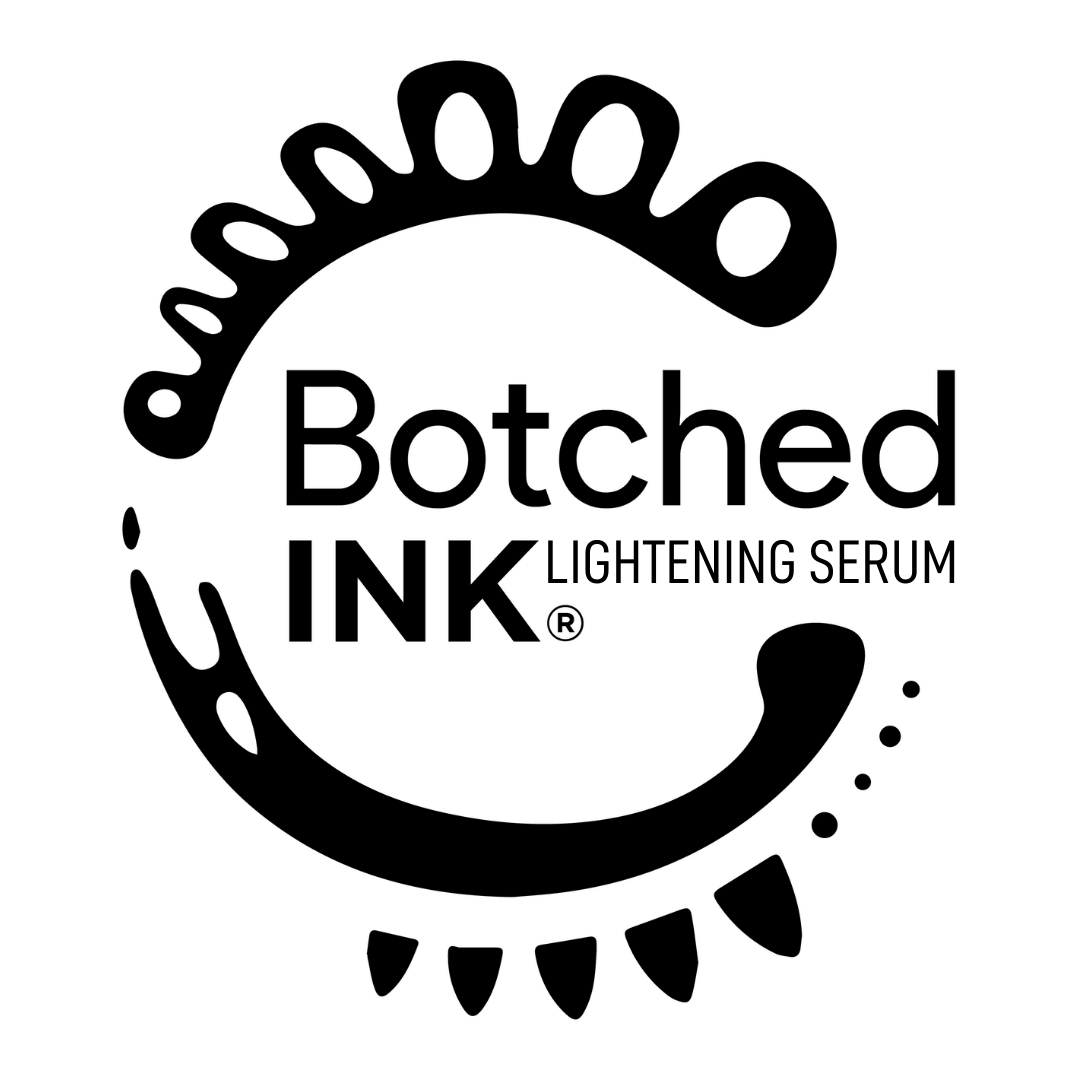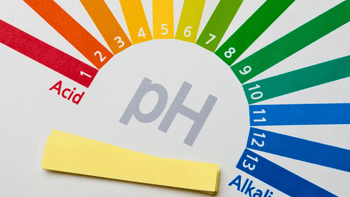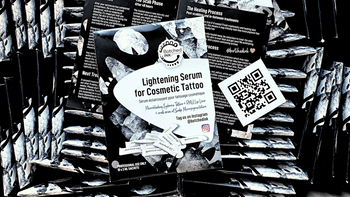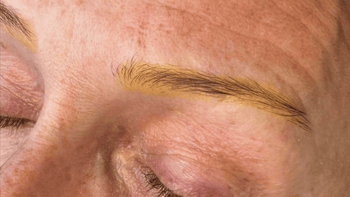Introduction
Permanent makeup removal can feel confusing, there’s saline, laser, even creams being marketed, and not every method works the same way on cosmetic pigments.
I’m Lisa Henning, owner and developer of Botched Ink®, and after more than 13 years in the PMU industry, I’ve seen it all. From microblading gone too dark, to colours turning orange, to shapes that simply need a reset, removal and correction are part of the job.
In this article, I’ll explain how permanent makeup pigments behave in the skin, the differences between saline and laser removal, and how correction or full removal is possible with the right approach.
Thanks for being here!
Lisa 🧡
TL;DR
Permanent makeup can be removed, but it’s rarely a one-session fix. Laser works well on black pigment but often leaves reds, yellows or whites behind, creating “sunset brows.” Botched Ink® saline removal targets the full pigment mix and heals predictably, making it the safer first step. Correction is often possible without full removal, and if black pigment remains, laser can be used more gently afterwards.
What is Saline Tattoo Removal? ➔
Find a Botched Ink® Tech Near You ➔
Semi-Permanent vs Permanent Makeup
The old distinction between “semi-permanent makeup” and “permanent makeup” is outdated. Advances in pigments and techniques mean all modern cosmetic tattooing is permanent makeup, the only difference is how long the colour holds before it needs refreshing.
Pigment stability, application depth, and skin type all affect how long results last. Some brows fade more softly, others remain visible for years, but none are truly temporary.
Why Permanent Makeup Lasts So Long
Pigment is implanted into the dermis, below the skin’s natural shedding cycle. That’s why it doesn’t disappear with normal skin renewal. The particles are larger and more durable than surface cosmetics, so the body takes longer to break them down.
High-quality pigments are formulated to remain stable and resist uneven fading. Sun exposure, scar tissue, skincare, and lifestyle choices also influence how the colour changes over time, but once pigment is placed in the skin, it’s far more resistant than ordinary makeup.
Eyebrow Tattoo Removal: Saline or Laser ➔

Can Permanent Makeup Be Removed?
Yes, whether it’s the wrong colour, the wrong shape, or just time for a reset, permanent makeup can be removed. The two main methods are laser and saline, with creams sometimes marketed as a quick fix.
Laser targets ink particles with heat, breaking them into fragments the body clears away. It works best on dark pigments, but struggles with reds, yellows, whites and greens — the colours most often used in brows. This is why clients can be left with orange or yellow brows after laser.
Saline removal works differently. Botched Ink® is tattooed into the skin to draw pigment up and out, whatever the colour. It’s gentle on skin, suitable for all types, and often the better first step for brows, lips and other delicate areas.
Creams are promoted as an easier option, but they’re unreliable and risky. Most are made from skin peel ingredients, so at best they irritate the surface, and at worst they burn, scar, or change skin colour without shifting deep pigment.

Laser vs Saline Removal
Both laser and saline can lighten or remove permanent makeup, but they work in very different ways.
Laser uses heat to shatter ink particles so the body can clear them. It’s effective on black pigment, but much less so on reds, yellows, oranges and whites. These colours often become more visible once the black fades, leaving brows that shift into “sunset” tones. Laser also can’t reach pigment trapped in scar tissue, which is common after years of top-ups.
Saline removal, especially with Botched Ink®, works on the full pigment mix by drawing colour up and out through a controlled wound. Healing is predictable, with lighter scabs and less irritation than harsh chemical removers. It’s suitable for sensitive areas like brows and lips, and can target specific patches of pigment rather than treating the whole area.
The two methods can complement each other, most clients start with saline first, then use laser later if black pigment remains. This approach avoids the colour complications laser often creates and makes any later laser treatments easier and gentler.

When Removal Is the Correction
Correction isn’t always adding colour; often it’s taking the wrong colour or shape away so the right result can be reapplied cleanly. That’s why saline removal, especially Botched Ink®, is a correction tool in its own right.
Lightening for Better Colour
If the brows are too dark, too warm, or simply heavy through the fronts and tails, selective saline lightening creates space. You’re not fighting old pigment with more pigment; you’re removing the obstacle so the next pass reads truer and heals cleaner. This avoids the “stacked corrections” look that happens when artists keep layering modifiers over saturated bases.
Managing Colour Shifts
Colour shifts are another case for removal first. If laser has exposed reds, yellows, or oranges, pushing more modifiers won’t fix a bad base. Saline takes the weight out of the sunset tones so a neutral, believable brown can be reapplied. The same logic applies to old ashy greys: lighten the residue before attempting a fresh shade.
Working With Scar Tissue
Scar tissue and overworked skin benefit from this approach too. Where laser can’t reach pigment beneath fibrotic layers, saline can still lift and often improves texture as it heals. That gives you a better canvas for any rework — smoother surface, less shine, fewer patchy grabs.
How Many Sessions?
Expect 1–3 sessions for light tidying on superficial pigment; oversaturation or long-standing colour problems usually need more time. Sessions are spaced 8–12 weeks to protect skin quality. Once the area is evenly lightened and fully healed, reapplication can be planned with realistic colour selection and mapping, rather than compromises forced by what’s left behind.
Bottom line: don’t correct on top of a problem. Use removal to be the correction. Start with Botched Ink® to clear colour and reduce saturation, then, if stubborn black remains, bring laser in later, easier settings, better skin, better results.

Complete Removal: Is It Possible?
Permanent makeup can be fully removed, but it takes time, patience, and the right combination of methods. Results depend on the pigment type, how deep it was implanted, the condition of the skin, and the technician’s skill.
Saline for the Full Pigment Mix
Saline removal, especially with Botched Ink®, is effective on all cosmetic pigments, reds, yellows, oranges, whites and blends. It works gradually, drawing pigment up and out while protecting skin texture. For most clients, this is the safest first step towards complete removal.
Where Laser Fits
Laser is strongest on black pigment, which saline will also lift but often more slowly. Using saline first clears the difficult colours and softens saturation, making any later laser sessions more focused and less aggressive. Laser on its own often reveals orange, yellow or red residues that then need correcting, starting with saline avoids that cycle.
Managing Expectations
Full removal usually takes multiple sessions over many months, sometimes a year or more. Not every tattoo disappears completely, results vary with pigment formulation, skin healing, and how much work the area has already had. What matters most is realistic expectations and a clear plan that protects skin quality as pigment is lifted.
What Types of Permanent Makeup Can Be Removed?
Both saline and laser can be used on all areas of permanent makeup, though not every method is safe everywhere.
Brows and Microblading
Brows are the most common removal request. Pigments are usually blends of black, red, yellow and white, which makes saline the safer first choice. Laser can be used later if black pigment remains.
Lip Liner
Saline is often preferred for lip liner, as laser can be painful and unpredictable on delicate tissue, and the white pigment that's often in lip pigments. Botched Ink® works gently here, creating controlled scabbing without harsh trauma. We don't work on lip tissue.
Eyeliner
Not every product is safe for eyeliner removal. At Botched Ink®, we don’t permit our techs to use saline near the eyes, it’s not worth the risk. Always check manufacturer guidelines before treating eyeliner.
Scalp Micropigmentation (SMP)
Both saline and laser can be used on SMP, depending on pigment type and depth. Saline is precise for smaller corrections, while laser can cover larger areas when the pigment is mainly black.
Key takeaway: most types of permanent makeup can be removed, but the safe method depends on pigment colour, skin type, and treatment area. Always confirm the product or device being used is approved for that part of the face or body.
Permanent Makeup Removal FAQs
How many sessions does permanent makeup removal take?
Most clients need multiple sessions. Laser usually takes 3–10 spaced 6–12 weeks apart, while Botched Ink® saline removal often needs 3–6, spaced 8–12 weeks. Some lightening is visible after the first session, but full removal takes time.
How long does it take for permanent makeup to fade?
Without removal, pigment can last for years. With professional saline or laser, results build gradually over months, as treatments are spaced out to protect the skin. A full process can take several months to a year.
Will I see results after one session?
Some pigment lightens after the first treatment, especially if it’s superficial. Dark or saturated work usually takes two or more sessions before the difference is obvious.
Will my eyebrow hair be damaged?
No. Laser targets pigment, not hair follicles, and saline is gentle on the surrounding tissue. Botched Ink® can even stimulate new growth around treated areas.
What side effects should I expect?
Temporary redness, swelling, or scabbing is normal with both methods. Botched Ink® tends to heal more predictably, with lighter scabs and less irritation than harsher methods. Laser may also cause temporary brow hair whitening, which resolves as new hair grows.
Is permanent makeup removal painful?
Pain levels vary. Laser feels like an elastic band snapping on the skin, while saline is usually described as a mild sting. Both are tolerable, and numbing can be used if needed.
Can permanent makeup be removed from all areas?
Yes, brows, lip liner, and scalp micropigmentation can all be treated. Eyeliner is an exception: Botched Ink® should never be used near the eyes. Always check your technician follows manufacturer safety guidance.
What’s the best method for emergency removal?
Saline is the safest choice if pigment is fresh and still settling. A Botched Ink® tech can often lift pigment within 48 hours before scabbing forms, something laser can’t do safely.
Does skin type affect results?
Yes. Darker skin tones can be more prone to hyperpigmentation, lighter tones to hypopigmentation. An experienced technician will adjust treatment and aftercare to protect skin health.
How much does permanent makeup removal cost?
Costs vary by clinic, method, and number of sessions. Laser sessions usually run $150–$500, saline $150–$300. Multiple treatments are usually required, so always ask for a personalised plan.
Conclusion
Permanent makeup removal isn’t a quick fix, but it is possible. Both saline and laser have their place, yet they work in very different ways. Laser is effective on black pigment but often leaves behind reds, yellows and whites, while Botched Ink® saline removal targets the full pigment mix and heals predictably with less irritation.
For many clients, saline is the safer first step, it works with the skin rather than against it, creates space for corrections, and avoids the “sunset brows” that laser alone can reveal. If black pigment remains afterwards, laser can still be used more gently once Botched Ink® has already cleared the difficult colours.
The key is setting realistic expectations: multiple sessions, months of healing time, and a focus on protecting long-term skin quality. With the right approach, unwanted pigment can be lightened, corrected, or completely removed, leaving a clean slate for whatever comes next.

Where to Go From Here
If you’ve read this far, you already know what sets Botched Ink® apart, a gentle, effective saline removal method designed for both results and skin health.
For clients: Ready to lighten or remove unwanted brows, lips or other permanent makeup? Our Find a Tech Map connects you with trained Botched Ink® professionals worldwide.
For professionals: Thinking of offering saline tattoo removal in your clinic? Enrol in our online training or join an in-person model class. You’ll learn the Botched Ink® method directly from the brand that created it.
Saline Tattoo Removal Training ➔
Botched Ink® is more than just a solution in a sachet, it’s a complete system of education, support and trust. Whether you’re a client or a professional, you’ll always have guidance every step of the way.
Thanks for reading,
Lisa 🧡
Owner and developer of Botched Ink®








